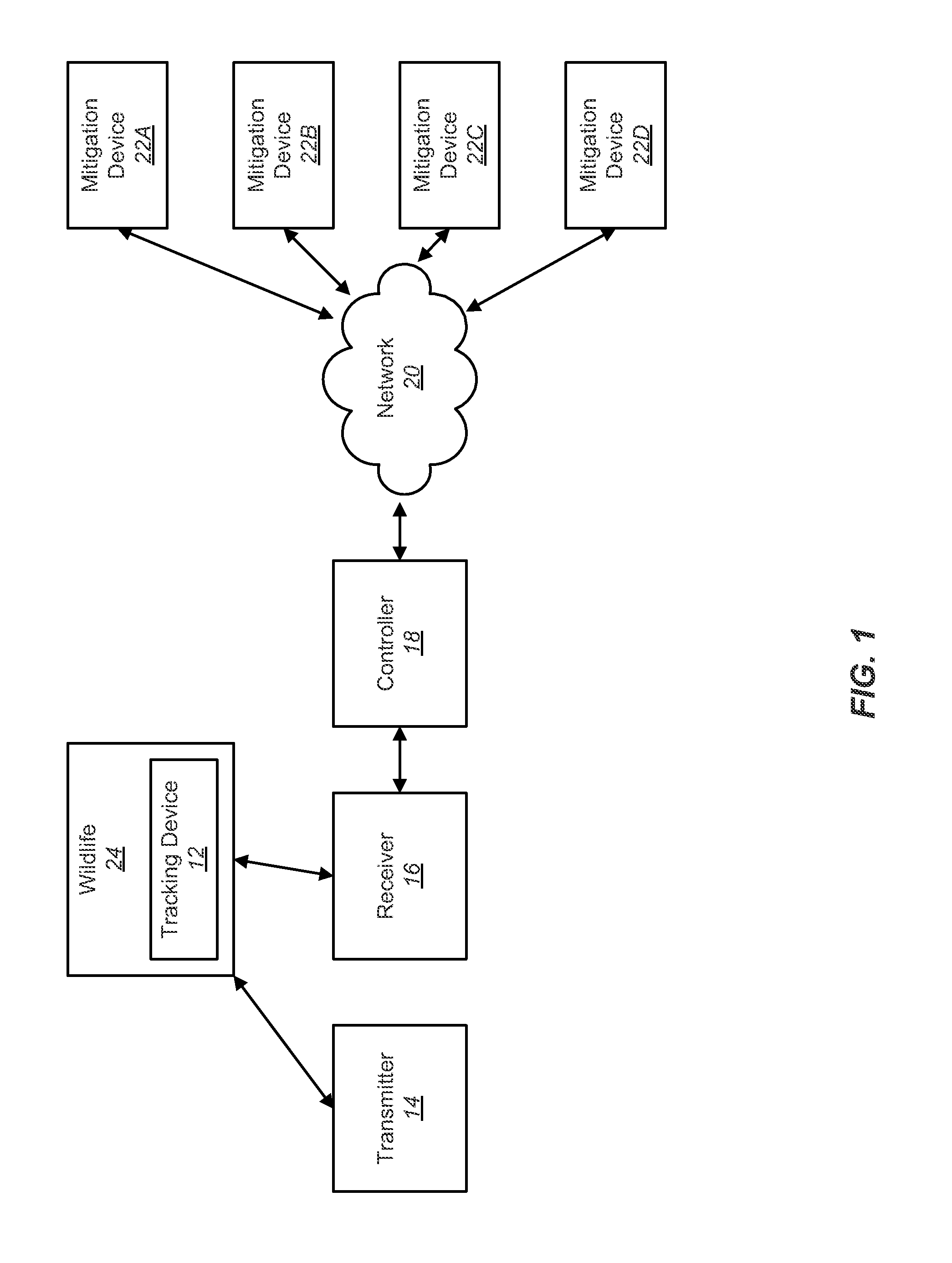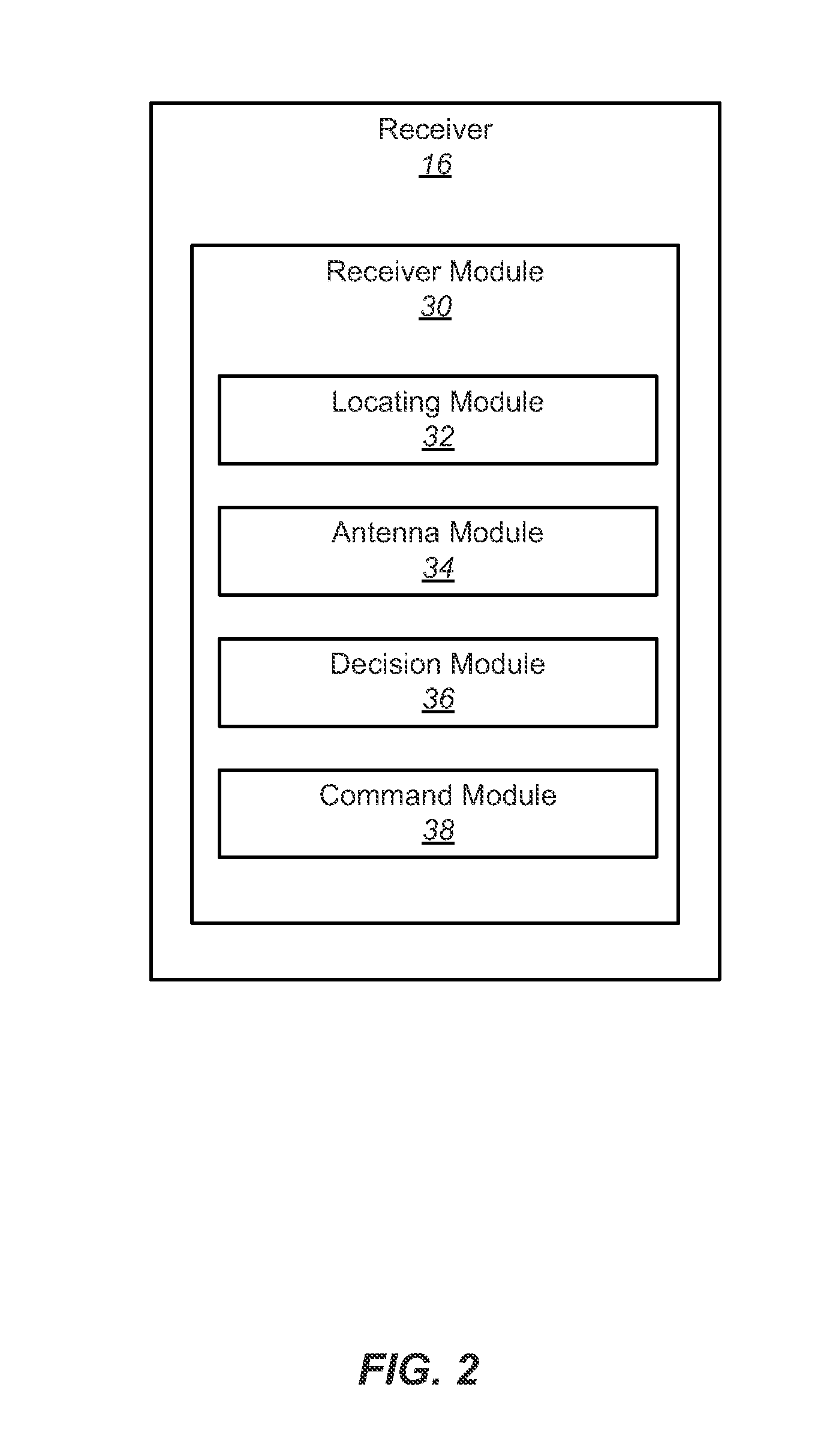Systems and methods for avian mitigation for wind farms
a technology for wind farms and birds, applied in the field of systems and methods for avian mitigation for wind farms, can solve the problems of not being able to generally classify a radar target as a specific species, not being able to generally classify a golden eagle separately from a common turkey vulture or a large raven or other species, and achieving the effect of reducing the risk of danger
- Summary
- Abstract
- Description
- Claims
- Application Information
AI Technical Summary
Benefits of technology
Problems solved by technology
Method used
Image
Examples
Embodiment Construction
[0033]The present disclosure is directed to a method for locating moving objects using a radar or radio fence. It is contemplated that the systems and methods of the present disclosure could be used for bird and bat species, to track individual animals or objects near wind farm turbines, or to track near other industrial equipment that might be detrimental to an animal of interest, including high voltage transmission and distribution lines, substations and other distribution equipment, and power generation stations. In addition, it also contemplated that the systems and methods of the present disclosure could be used to track ground based mammals and reptiles for similar reasons such as avoidance and early detection of large animals on roadways passing through natural habitat or migration pathways, or detection and avoidance of animals dangerous to persons. Furthermore, the systems and methods disclosed herein could be used to perform general functions of interest to field biologist...
PUM
 Login to View More
Login to View More Abstract
Description
Claims
Application Information
 Login to View More
Login to View More - R&D
- Intellectual Property
- Life Sciences
- Materials
- Tech Scout
- Unparalleled Data Quality
- Higher Quality Content
- 60% Fewer Hallucinations
Browse by: Latest US Patents, China's latest patents, Technical Efficacy Thesaurus, Application Domain, Technology Topic, Popular Technical Reports.
© 2025 PatSnap. All rights reserved.Legal|Privacy policy|Modern Slavery Act Transparency Statement|Sitemap|About US| Contact US: help@patsnap.com



